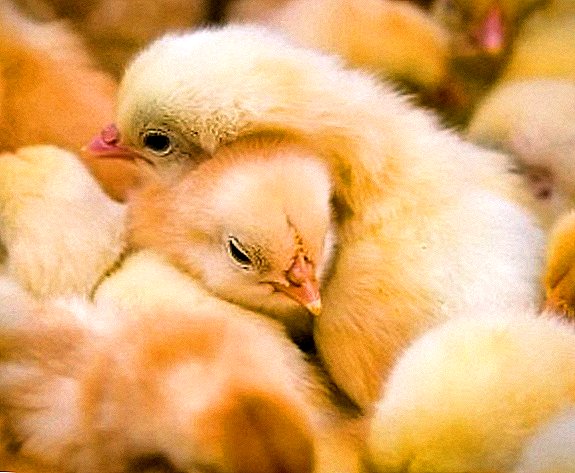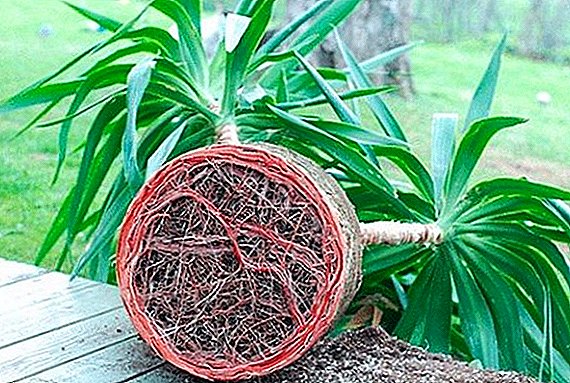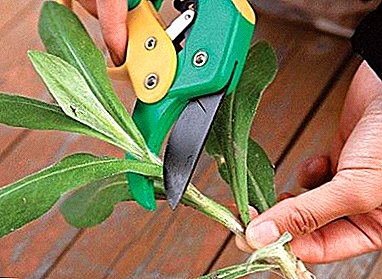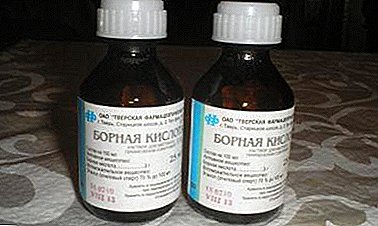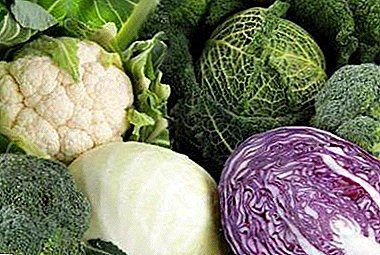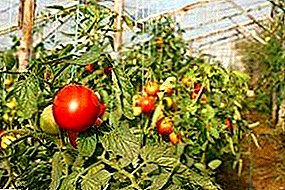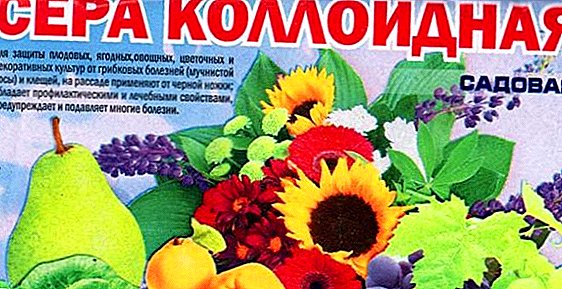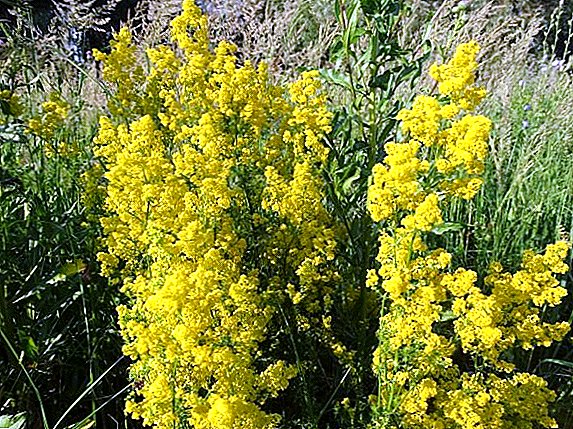 Yellow panicles of flowering grass morning present Many people learn from afar by the pleasant honey aroma. Herbalists talk about sedative, analgesic, antiseptic and tonic effect of the plant on the human body. Find healing raw materials is easy, as well as to prepare a medicine from it. But there is an opinion about the toxicity of the weed. What is a potion, what it consists of and what treats - we will tell about all this later in the article.
Yellow panicles of flowering grass morning present Many people learn from afar by the pleasant honey aroma. Herbalists talk about sedative, analgesic, antiseptic and tonic effect of the plant on the human body. Find healing raw materials is easy, as well as to prepare a medicine from it. But there is an opinion about the toxicity of the weed. What is a potion, what it consists of and what treats - we will tell about all this later in the article.
How it looks and where it grows
In the botanical description of scientific sources, the bed-bed of the present (Galium verum) is presented as a perennial tenacious herb with straight, fragile stems. It develops upwards from 60 to 120 centimeters and is often rooted when the shoots touch the soil. 
Did you know? In ancient times, every family stuffed mattresses with this fragrant grass. This was done not for the purpose of pleasant incense during sleep, but to destroy the fleas that ran away from the spreading smell.The roots of the plant are shallow and branched, and the leaves narrowly linear with sharp tips and velvety pile on the inside. Characteristically, the bottom leaves smoky-green, and the top - dark and shiny. Every leaf plate expands up to 3 cm in length and up to 2-3 mm in width.
If there are no upright plants with a bedstraw next to him, his stems will spread out on the ground, slightly lifting the tops.
In the first half of summer, the bedstraw blooms, throwing out the long paniculate peduncles of pyramidal shape. Its small bright yellow flowers in diameter barely reach 3 mm, but have a highly concentrated aroma and form a dense inflorescence. 
You can see the plant on dry land, sunny glades and roadsides of Eurasia. It also naturalized in the northern regions of the United States of America, in Canada and New Zealand. In Ukraine, this plant is common in all areas and is not at all uncommon.
People often call grass "baby", "honey swine", "goose", "wormfish", "honey". Botanists, in turn, attribute the species to the vast Bedmaker genus, which consists in the number Marenov family.
Did you know? Dear cheese growers in the English ceremonial county of Gloucestershire, used honey grass inflorescences to thicken the milk and to color the world-famous cheeses.

Chemical composition
In society there is an ambiguous attitude towards the plant. Some consider it a cure, and others - a deadly poison. To understand the true qualities of the present bed-bed, analyze its chemical composition. According to laboratory research in all parts of the perennial contains:
- essential oils - play the role of natural filters, cleansing the body of toxins and slags;
- flavonoids - regulate the permeability of the walls of blood vessels, contributing to their elasticity;
- tannins have an astringent, rejuvenating and tonic effect;
- glycosides - are unstable substances that when heated, decompose into sugars and aglycones, have a laxative effect;
- steroid saponins are complex nitrogen-free organic compounds whose specific properties are the ability to form foaming;
- coumarins, in the food and cosmetic industry of many progressive countries, are prohibited, cause allergic dermatitis, cancer and severe intoxication;
- asperulozide;
- iridoids;
- citric and gallotaninic acids;
- carotene (a form of vitamin A);
- ascorbic acid (vitamin C);
- rubber;
- iron;
- magnesium;
- copper;
- zinc;
- nickel;
- molybdenum;
- thallium;
- gallium;
- strontium;
- chromium;
- vanadium;
- coloring matter.

Did you know? In Scandinavia, the bedstraw is called "friggy's grass". According to Norse mythology, the plant was the main attribute of the omnipotence of the local goddess of married women, Frigga, who helped women in childbirth.
Medicinal properties
People knew about the healing effects of grass in ancient times. Then for medicinal purposes they used roots, stems, foliage and flower panicles of the bedstraw. To this day, the secrets of treatment have been preserved, but in our country only folk herbalists recognize them. Official medicine says weakly toxic plant and not in a hurry with conclusions.
Other nations have studied the impact of this culture on the human body, some even registered it among the medicinal plants with homeopathic properties. Bulgarian healers made a special contribution to the study of the pharmacology of honey grass. 
In their opinion, the potion has a choleretic, tonic, anti-inflammatory, analgesic, antiseptic, antispasmodic, diuretic, sedative, diaphoretic, hemostatic and healing effect. Moreover, from the raw material is prepared of various kinds and consistency of means, applied externally and internally. For example, compresses from the decoction of the bed-bed helps to soften the infiltrates, which helps in the treatment of boils, edema and tumors.
Important! Before using the present bedstraw for medicinal purposes, be sure to consult with your doctor. Do not forget about the toxicity of the herb and do not self-medicate.
Application
Honey grass is known not only for its pharmacological properties. It has long been widely used for dyeing cotton and silk fabrics in yellow, bright scarlet, purple and even purple colors. But that's not all. Also, the potion was used by cooks and healers. 

In cooking
Ground part of the weed willingly collected brewers. They added it to the drink to give a pleasant honey smell and strength.
But the flowers and leaves are often used by the hostess, using them for curdling milk. The fact is that in the composition of these parts of the plant there are enzymes that contribute to fermentation processes.
Until now, the inhabitants of Turkmenistan use the bedtime of the bedstraw as a spice. In addition, lush inflorescences are an excellent honey plant. 
In folk medicine
Traditional medicine advises ointments, baths and lotions from fresh plant materials for bruises, skin oncology, eczema, burns, cuts, purulent ulcers and abscesses. For internal use prepare juice, powder, infusion, tea. They use drugs for pain, dermatitis, colds, sore throat, pneumonia, gastroenteritis, cardiovascular diseases, intestinal colic, nephritis, nervous disorders and diabetes mellitus.
The hellebore, oregano (oregano), chervil, caraway, rocambol, loch, hops, oxalis, calendula and buttercups, as well as a bedtime char, have a beneficial effect on the cardiovascular robot.

Important! It is possible to store dry raw materials of the bedstraw of the present no more than 3 years. And for this purpose it is better to find a dark place, away from medicines and food absorbing smells.
Medical recipes
In folk medicine of different nationalities, in particular Eastern ones, the use of a yellow bed-bed in various forms is practiced. We will understand in more detail what and when it is tedious to accept.
Tea
Drink will benefit inflammatory processes in the kidneys, urogenital dysfunction, ankle swelling. And in the case of various injuries and burns, it is recommended to make tea compresses from tea and apply them to the affected areas.
For the preparation of the drug you need to take 1 tablespoon of powdered powdered raw materials and a glass of boiling water. After connecting the components, boil them for another minute. Herbalists advise you to take ready tea for 2-3 glasses per day. 
If there is a need for external use of the liquid, prepare it in stronger concentrations. To do this, take one and a half tablespoons of herbs and the same amount of water.
The juice
Juice therapy with bedstraws is universal and is used in most cases when grass treatment is appropriate. To get the medicine, you will need to grate finely or grind the roots of the plant (other parts of it can also be used) and squeeze the resulting gruel through the multi-layer gauze.
Some housewives share their experience in canning liquid, but at the same time alcohol is added to it (in the proportion of 100 ml per liter). Take the means inside by a tablespoon 3 times a day after meals. 
Important! Honey grass juice helps to reduce the secretion of breast milk, so nursing mothers can not drink it.
Ointment
For treatment of boils, boils, boils, folk healers use ointment. In order to cook it, you will need to chop the raw material. After processing, it should be brought to a state of dust. Then 10 g of the obtained substance should be mixed with 50 g of butter and thoroughly rub. After that, place the medicine in a container with a lid and let it sit for 7 days.
Use ointment to the extent necessary, lubricating problem and affected areas on the body. 
Powder
This form of treatment is practiced only in cases where severe abdominal pain and bloody discharge occur in diarrhea. The drug is prepared by grinding a dry plant. Take it 2 grams 3-4 times a day.
Infusion
Perhaps this is the most common form of treatment with honey grass. It is used in cases of kidney disease, edema of cardiac and renal origin, skin diseases, painful menstruation, cancer of various locations, nervous excitability.
In addition to the present bed-bed, the following plants are also used in the treatment of skin diseases: raspberry, sunberry, padubolithia mahony, dogwood, ivy-shaped bud, sweetie, lavender, dodder, hogweed and golden root.
Medicinal drink is prepared from 1 tablespoon of crushed plants and 500 ml of boiling water. All ingredients must be combined in a thermos, tightly closed and set for 4-5 hours to infuse. After that, the fluid must be filtered and ingested 100 ml 4 times a day before meals. 
Did you know? The Latin name of the bedstraw (Galium verum) comes from the Greek word "gala", which means "milk", but the English version "Our Lady's Bedstraw" literally translated as "thatched bed of our lady" and comes from the tradition of stuffing grass with mattresses.
Preparation of medical raw materials
The best period for this procedure is the time when the weed enters the flowering phase. For therapeutic purposes, all parts are suitable. The main thing: to collect them away from the dusty roads and industrial enterprises.
In dry weather throughout the summer, you can cut the stems and stalks of plants. Dry them, as a rule, in attics. It is important that direct sunlight does not fall on the grass, the room is dry and warm, and good ventilation is necessary. It is also advisable to dig up the roots at the peak of the perennial growing season. 
Dry raw materials can be immediately crushed through a coffee grinder and stored in powder form in a closed glass container or else put the grass in fabric bags.
Place to store herbs should not be raw.
Contraindications and harm
A bedtime therapy does not always end with an expected cure. Grass can cause enormous harm to the body if you use it illiterately and not to enlist the advice of experts. 
Do not forget about the presence in the perennial of harmful coumarins, which in the United States of America are considered the worst enemies of the human body. Due to the presence of these substances, the plant is poisonous. Consequently, this herb is absolutely contraindicated for children, pregnant women and women during lactation. Allergy sufferers suffering from diabetes and urolithiasis should also be treated with concern.
Obviously, a yellow bedstraw is not a panacea for all common diseases at all; therapeutic properties and contraindications are balanced.


